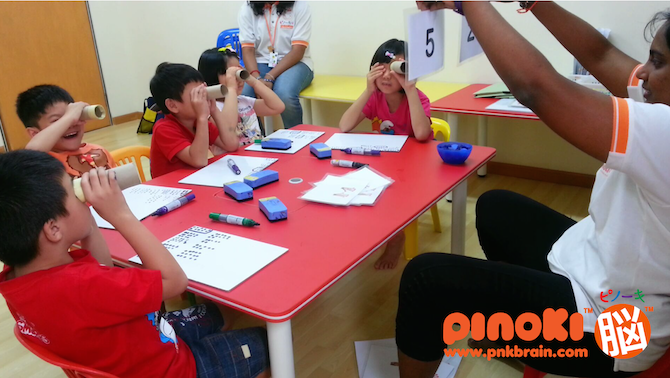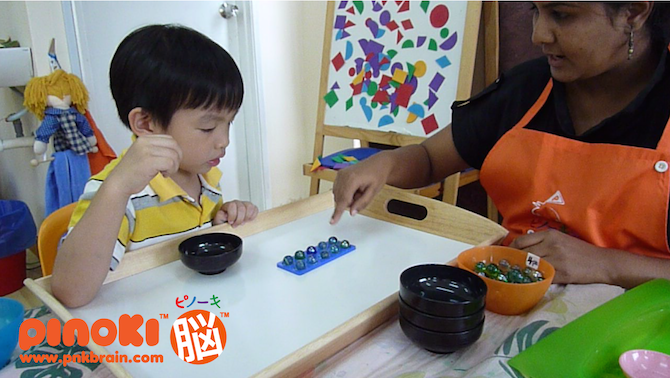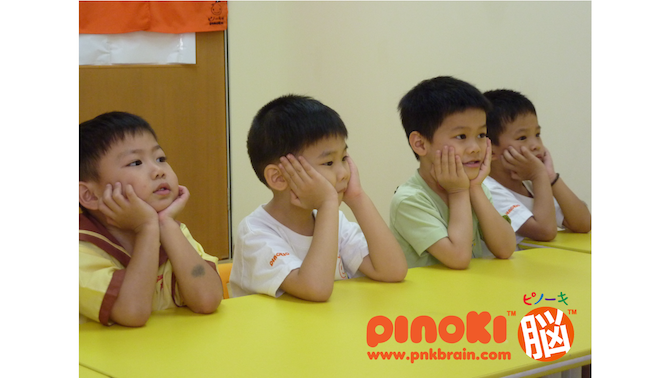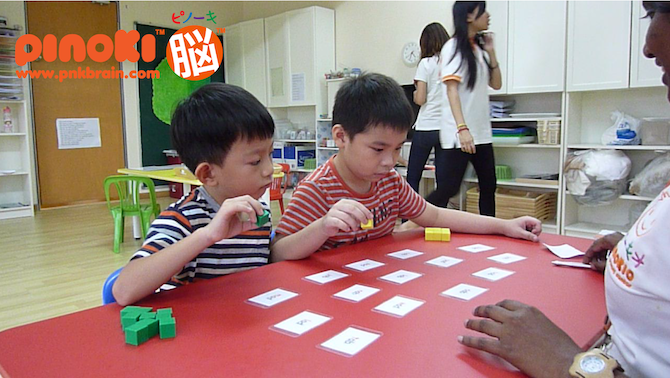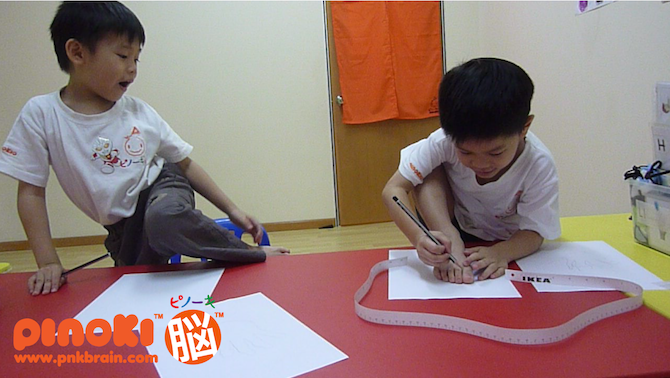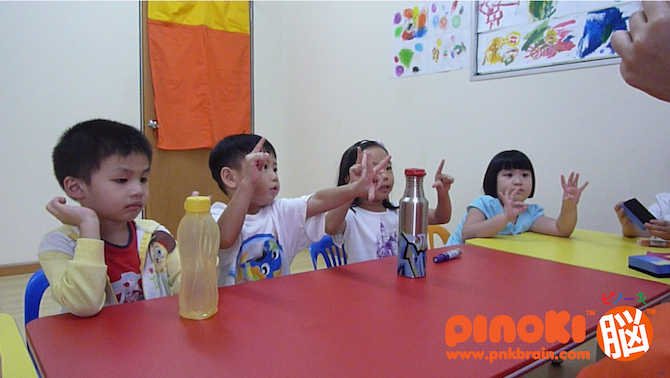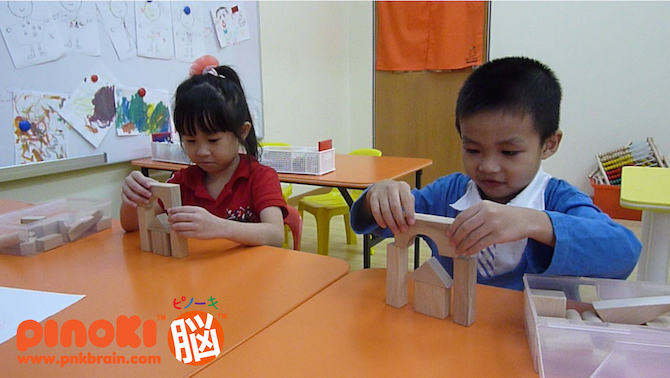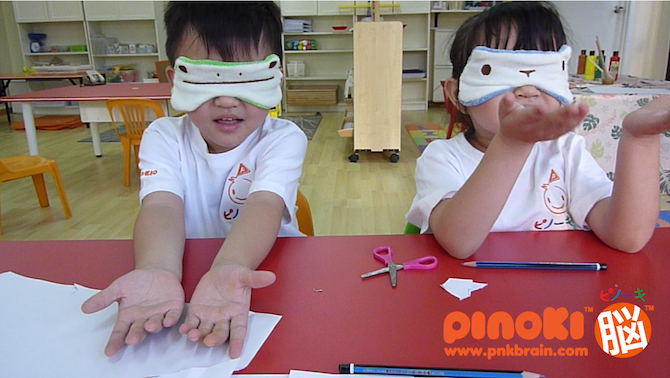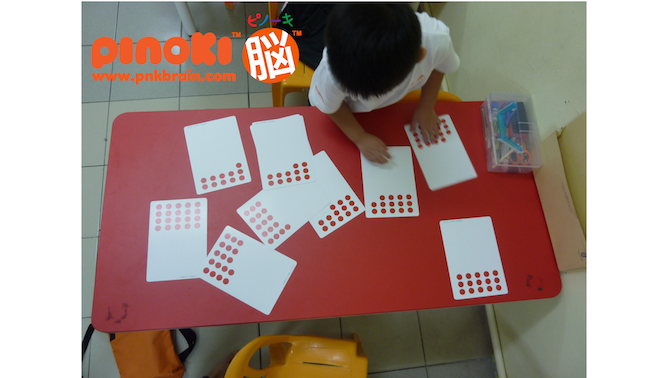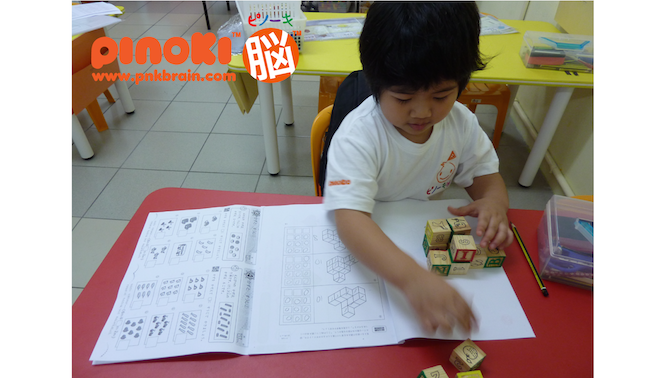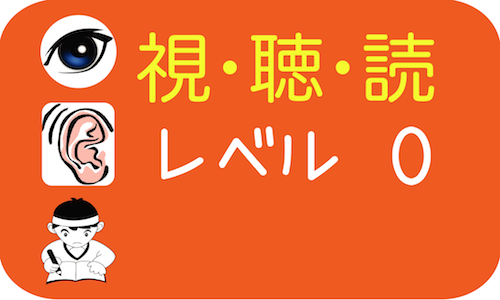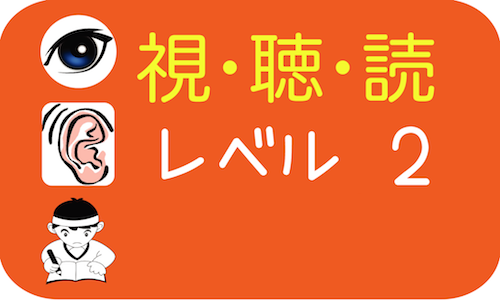Level 1
Level 1
| Level レベル |
1 |
| Age 対象 |
7-9 years old 7~9歳児 |
| Duration 授業時間 |
90 minutes per class 1回90分 |
| Students per class 定員 |
Maximum 10 students in a class 1クラス10名程度 |
| Tuition Fees 月会費等 |
Please refer to your nearby Pinoki Brain Training Centre for more information. 月会費等については、各教室のページに掲載しています。 教室検索ページにてご希望の教室を検索して下さい。 |
At the age of 4-6 years old, given strong foundation of image ability, children will be able to absorb multi languages, mathematical and abstract concepts through visualisation. This is a crucial time because by the age of 7, these children will be introduced to primary school where a series of increasingly heavy and difficult school syllabus will be imposed on them. There is hardly an opportunity for them to refine their image-based learning habit owing to the repetitive teaching style at school. The foundation of image-based learning habit is cultivated from the age of 4 to 6. Children with good foundation in image-based learning will automatically carry on learning using their already consolidated image-based ability. It doesn’t require much effort for them to visualise abstract concepts and patterns (visualising concepts and patterns require the use of the right brain). However, children who do not have good foundation in image-based learning will be easily influenced by the left-brained environment in school and consequently develop a set of stubborn and unbalanced left-brained learning behaviour. Left-brained learners usually learn through repetition and rigid memorisation. Visualising abstract concepts and patterns to them can be too strange and reluctant. Repetitive single-sense exercises and word-based memorisation could adversely affect the creative mind of children. Therefore, the Level-0 and Level-1 Course of Pinoki Brain Training Method emphasises on developing image-based learning habit including the ability to visualise and retain memory through the use of all senses.
The Tip Of The Iceberg of Level-1 Course:
- Image Ability: fast recognition of thousands of images, spot the difference (able to verbally tell the difference), find the odd one out, compare two images, compare three images, compare more than three images, matching, sorting, photographic memory using a variety of images including mathematical images, shapes, numbers, letters, colours, silhouette images and so on.
- Mental Imagery: 'see from my eyes' exercise and counting invisible blocks.
- Creativity Training: origami, creative thoughts (out-of-the-box ideas), Mental Note, photographic drawing, drawing with conditions and so on.
- Physical Training: balancing, ball exercise, rolling, hand-eye coordination through a variety of throwing and fetching exercises, left-right hand activation, balancing, rhythmic play, imitating physical movements, one-leg jumping, two-leg jumping, stretching, space jumping, idling, role play, and so on.
- Language: photographic phonetic reading, rhyming words, word search, speed listening and speed reading, link three images in a story and so on.
- Number and Quantity: read and use 0, quantity recognition from 1 to 20, quantity recognition from 1-30, more or less, most and least, compare length and height, able to write 1-10, halving and doubling, addition within 20, subtraction within 20, multiplication within 20, division within 20, match quantity images, match number and quantity, understand relative terms like long, short, more, few, thick, thin and so on, compare measurements, understand fractions like 1/2, 1/3 and so on, understand order of objects and so on.
- IQ Tests and Reasoning Skills quizzes using matches, origami puzzles, origami quizzes, shape puzzles, image puzzles, silhouette puzzles, understand the left and right part of the body, understand ‘later’ and ‘just now’, mazes with conditions, understand sequence and arrangement, deeper understanding of features and functions, ability to link features and functions, finding the odd one out, maze with conditions, understand ‘before’ and ‘after’, patterning and so on.
- Photographic Memory: 1-4 photographic image memory, word memory, 2 to 3-colour Mandala, visual spatial memory, speech memory, multi-sensory memory, short sentence training, linking memory and so on.
- Pattern Recognition: construct image using various shapes, sequential memory using shapes and colours, doubling and halving, a variety of pattern-recognition-based photographic memory puzzles, contour training, shapes and stroke recognition, silhouette puzzle, overlapped shapes, reconstruct a big shape using repetitive fractional units, compose a target image using random shapes, spot the differences between two shapes, spot the difference, shape recognition training through drawing and filling in the space, connecting dots to make a shape, understand the relationship of positions, and so on.
Centres
Malaysia
- Pandan Indah Headquarter (WhatsApp 016-3351300)
- Bukit Jalil Centre (WhatsApp 012-3737 160)
- Tadika Future Star Education (Tel: 011-11891898)
- Desa ParkCity (Plaza Arkadia) WhatsApp 017-5326304
- Subang Jaya (USJ10 @ Taipan) WhatsApp 014-739 6639
- Tadika Didik Awal @ KD (WhatsApp 014-7396639)
- Mahkota Cheras Centre (WhatsApp 012-342 8336)
- Pandan Indah Headquarter (WhatsApp 016-3351300)
- Bukit Jalil Centre (WhatsApp 012-3737 160)
- Tadika Future Star Education (Tel: 011-11891898)
- Desa ParkCity (Plaza Arkadia) WhatsApp 017-5326304
- Subang Jaya (USJ10 @ Taipan) WhatsApp 014-739 6639
- Tadika Didik Awal @ KD (WhatsApp 014-7396639)
- Mahkota Cheras Centre (WhatsApp 012-342 8336)
